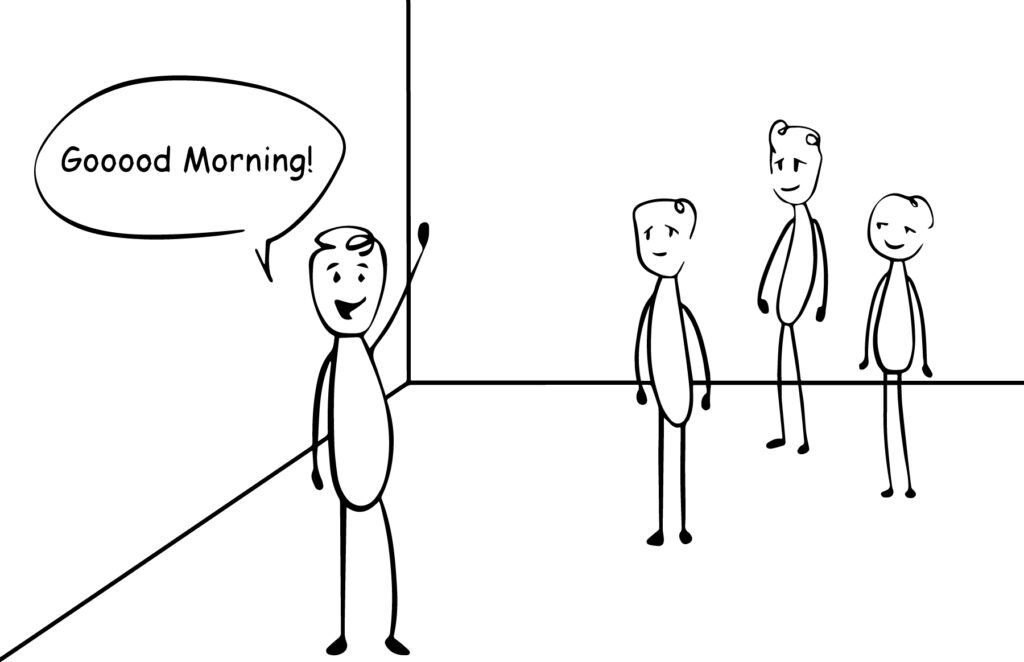This ad popped up in my feed and made me laugh out loud.
For those of us who remember this era, and even for those who don’t, this photo prompts the question “What were we thinking?” Who really thought this was an attractive look? Cringe.
It was a real trend. People actually liked it. Looking back at it, it’s easy to see how much our perceptions of style have changed. Thankfully we got beyond that crazy stage and arrived at where we are now.
This is one of the predictable things we humans do. We can look back and see how much things have changed.
Think back right now to your ten-years-younger self. Who were you?
What has changed? Do you dress the same? Think the same? What can you do now that you couldn’t do then? What parts haven’t changed? Chances are you can see many ways that you are a different version of yourself than you were then.
What’s trickier is imagining that same kind of change in the future. One of my favorite authors and TED talker is Dan Gilbert. He is a Harvard psychologist who studies happiness. Dan talks about something that he calls the “end of history illusion”. It is the tendency that humans have to believe that the person they are today is the person that they’ll be until they die.
Here is how he unpacks it:
The bottom line is, time is a powerful force. It transforms our preferences, reshapes our values, and alters our personalities. We seem to appreciate this fact, but only in retrospect. Only when we look backwards do we realize how much change happens in a decade. It’s as if, for most of us, the present is a magic time. It’s a watershed on the timeline,the moment at which we finally become ourselves. Human beings are works in progress that mistakenly think they’re finished. The person you are right now is as transient, as fleeting and as temporary as all the people you’ve ever been. The one constant in our life is change.
It turns out that asking the question “Who will I be next?” is harder than we think it is.
Our brains struggle to imagine new versions of ourselves. And yet, that is what we are constantly becoming. Where it gets more interesting is looking at how much of that change we create in a purposeful way and how much happens as we ride along through life.
Another favorite of mine is James Clear’s Atomic Habits work. He talks about how what we repeatedly do is what creates who we are. The change in small things is what creates the change in who we become over time. Sometimes change happens swiftly and powerfully, but most of the time it’s more subtle and we aren’t even totally aware of it. Clear’s concept of Atomic Habits is built around the idea that we actually have a lot of autonomy in who we become, we just don’t tend to use that autonomy very well. It takes intentionality and courage to imagine who we want to become and create the little changes that get us there.
This season has been a season of reflection and introspection as Thought Design has turned ten. The same “end of history” phenomenon, of course, works with a business as well. It’s easy to look back and see all the ways that Thought Design has changed over the years. There are new people, new ideas and new ways of doing things. Who we were then isn’t who we are now. I’m glad to say that I think Thought Design has matured and evolved in beautiful ways. It’s more challenging to imagine ourselves in the future. Yet, that is exactly what we get to do.
So what’s next? Who is the next version of us?
What might we have to change, let go of, or create to become the Thought Design of 2033? Somehow 2033 feels further in the future than 2013 is in the past, but of course, it’s not. We will change over the next ten years. We will become a new version of us.
Who is the next version of you?
Just some food for thought.




